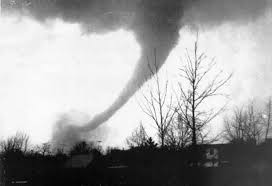Tornadoes: Understanding Nature’s Fury in Canada

Introduction
Tornadoes are one of nature’s most violent weather phenomena, capable of causing devastating destruction in a matter of minutes. As Canada experiences an uptick in severe weather incidents, understanding tornadoes and their implications has become increasingly important for residents and policy makers alike. With thousands of tornadoes reported annually across North America, having effective preparedness strategies is crucial for minimizing their impact on communities.
The Science Behind Tornadoes
Tornadoes form from severe thunderstorms, particularly supercells, under specific atmospheric conditions. They typically develop when warm, moist air at the surface meets cooler, dryer air aloft. This temperature gradient, along with wind shear, can create a rotating column of air that may touch down and form a tornado. Canada, particularly in regions like the Prairies and Ontario, witnesses a number of tornadoes each year, with the summer months being the most active.
Recent Tornado Events in Canada
In August 2023, a series of tornadoes struck Southern Ontario, including the towns of Barrie and Windsor, causing significant property damage and prompting emergency responses. The tornadoes were classified as EF2 on the Enhanced Fujita Scale, with wind speeds reaching up to 220 km/h. Fortunately, no fatalities were reported, but several injuries were documented, and hundreds of homes sustained damage. Emergency preparedness measures were immediately activated, emphasizing the importance of community protocols during such severe weather events.
Preparedness and Safety Measures
In light of the increase in extreme weather events linked to climate change, educating the public on tornado readiness is paramount. The Government of Canada recommends several safety measures: staying informed through weather alerts, having a safety plan in place, and designating a shelter area in homes. Schools and workspaces are also encouraged to conduct regular drills to ensure everyone understands what to do in the event of a tornado warning.
Conclusion
As climate patterns change, the frequency and intensity of tornadoes are likely to rise, necessitating a greater emphasis on preparedness, response, and recovery strategies. Community engagement and awareness can significantly reduce the risks associated with tornadoes, ensuring that residents are equipped to handle such unpredictable and dangerous weather events. Staying informed and prepared is essential for safeguarding lives and properties in the face of nature’s fury.


